
Chromatography
Dynamic Headspace
Dynamic Headspace (DHS) can be used for a wide range of environmental applications. Pollutants can be detected in drinking water, river water, and waste water. These matrixes include chemicals of different polarity, volatility, such as chlorinated hudrocarbons, aromatics, oxygenates, etc. Dynamic Headspace also can be used for further applications:
- characterization of spices, herbs, foods, soaps
- residual monomer and other VOC in polymers
- residual solvents in food packaging
- "green label" product testing
- OVIs in pharmaceutical products
- trace impurities in active pharmaceuticals ingredients
- metabolites in biological fluids (aromatic hydrocarbons in urine, benzene in blood)

Unit Conversions
HPLC capillaries volume chart
| ID (mm) | ID (inch) | µl/cm | µl/inch | ID (mm) | ID (inch) | µl/cm | µl/inch | |
|---|---|---|---|---|---|---|---|---|
| 0.050 | 0.002" | 0.02 | 0.05 | 1.00 | 0.040" | 7.85 | 20.59 | |
| 0.064 | 0.0025" | 0.03 | 0.08 | 1.40 | 0.055" | 15.39 | 38.93 | |
| 0.075 | 0.003" | 0.04 | 0.12 | 1.52 | 0.060" | 18.15 | 46.33 | |
| 0.10 | 0.004" | 0.08 | 0.21 | 1.59 | 0.062" | 19.86 | 49.47 | |
| 0.13 | 0.005" | 0.13 | 0.32 | 1.65 | 0.065" | 21.38 | 54.38 | |
| 0.17 | 0.0067" | 0.23 | 0.58 | 1.70 | 0.067" | 22.70 | 57.78 | |
| 0.18 | 0.007" | 0.25 | 0.63 | 1.78 | 0.070" | 24.88 | 63.06 | |
| 0.25 | 0.010" | 0.49 | 1.29 | 2.00 | 0.079" | 31.42 | 80.32 | |
| 0.38 | 0.015" | 1.13 | 2.90 | 2.10 | 0.083" | 34.64 | 88.66 | |
| 0.50 | 0.020" | 1.96 | 5.15 | 2.16 | 0.085" | 36.64 | 92.99 | |
| 0.75 | 0.030" | 4.42 | 11.58 | 2.40 | 0.094" | 45.24 | 113.72 |
UV cutoff of mobile phase aditives
| Aditivum | UV Cutoff (nm) |
| Acetic acid, 1 % | 230 |
| Ammonium acetate, 10 mM | 205 |
| Ammonium carbonate, 10 mM | 190 |
| Ammonium Hydrogenphosphate, 50 mM | 205 |
| CAPS 3-(cyklohexylamino)ethan sulfonic acid, 0,1 % | 215 |
| EDTA, 1 mM | 190 |
| Hydrochloric acid, 0,1 % | 190 |
| Kalium Hydrogenphosphate, 10 mM | 190 |
| Kalium Dihydrogenphosphate, 10 mM | 190 |
| MES 2-(N-morfolino)ethan sulfonic acid, pH 6,0, 10 mM | 215 |
| Natrium acetate, 10 mM | 205 |
| Natrium citrate, 10 mM | 225 |
| Natrium dodecylsulfate, 10 mM | 190 |
| Natrium formate, 10 mM | 200 |
| Natrium hexansulfonic acid, 5 mM | 225 |
| TEA, (triethylamine), 1% | 235 |
| TFA, (trifluoroacetic acid), 0,1 % | 190 |
| Tetrabutylammonium dihydrogen phosphate, 5 mM | 200 |
| TRIS HCl (Tris(hydroxylmethyl)aminomethan), pH 7,0, 20 mM | 202 |
| TRIS HCl (Tris(hydroxylmethyl)aminomethan), pH 8,0, 20 mM | 212 |
Unit conversions and tables
 Unit conversions:
Unit conversions:
- Useful tables in chromatography
- Acid and bases pK used as an additivum for mobilne phases in HPLC
- UV cutoff of mobile phase components
- Column selection based on injection voluem and column capactiy
- Capillary choise for different flow rates
- ChromShell calculator (WE PREPARE)
- Pressure prediction in dependance of particle size, column length and diameter
- Viskosity of solvent mixtures
- Particle size conversion
Dosing pumps
Dosing pumps
Dosing pumps are used in many applications, in laboratories and within industry. Often we see the needs, when we require dose liquids under specific conditions:
- High pressure dosing (reaction chambers, aparatures)
- High temperatures dosing
- Injection of reactive substances
- Dosing of viscous media
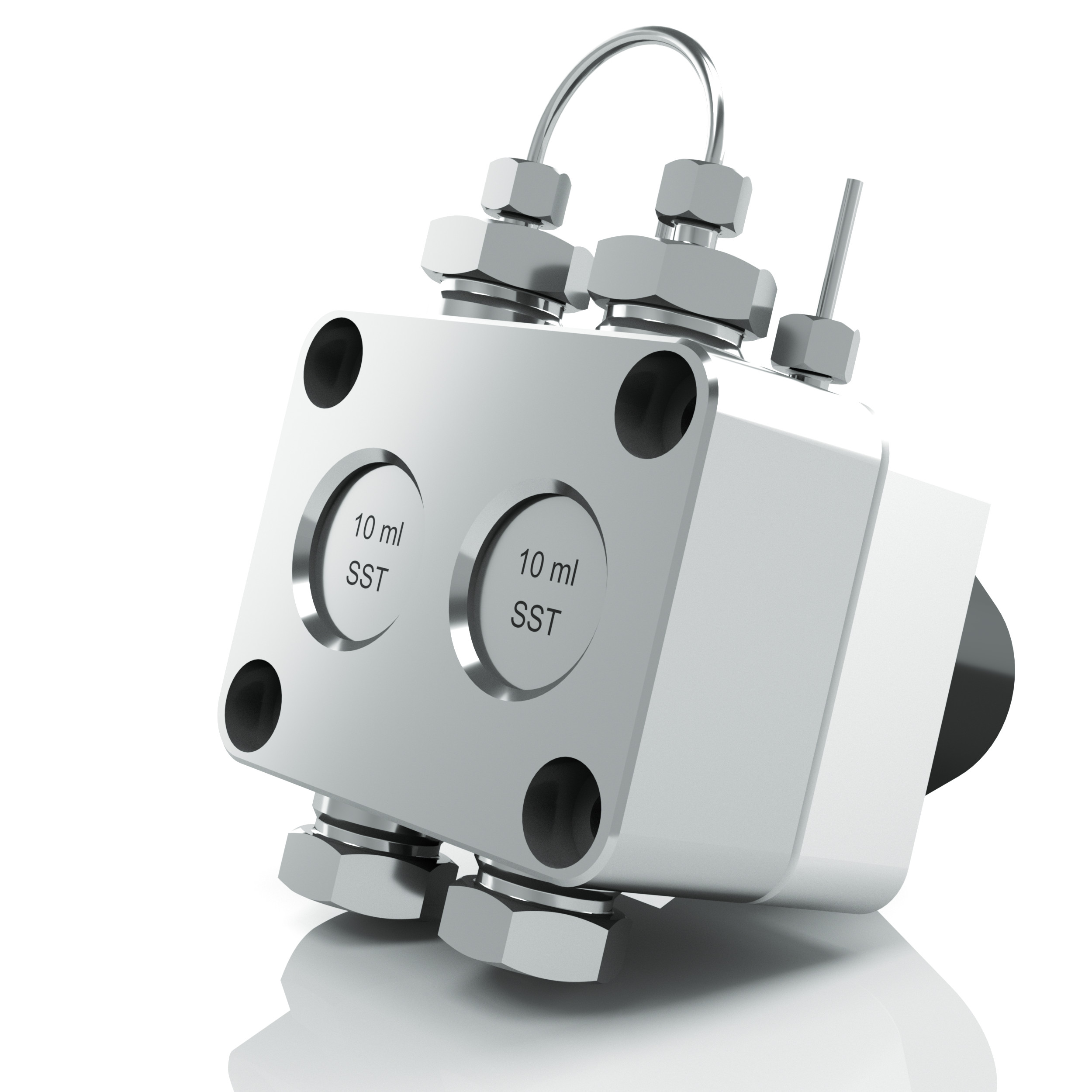 For all above mentioned applications it is possible to use technology that has been proven in the area of high performance liquid chromatography (HPLC). These are double-piston pumps AZURA (Knauer), which use sphire pistons enabling precise continuous dosing under high pressure. These pumps can work with flow of 0,01 to 1000 ml/min, under temperatures of -10°C to +120°C and with viscous media up to 1000 mPa.s.
For all above mentioned applications it is possible to use technology that has been proven in the area of high performance liquid chromatography (HPLC). These are double-piston pumps AZURA (Knauer), which use sphire pistons enabling precise continuous dosing under high pressure. These pumps can work with flow of 0,01 to 1000 ml/min, under temperatures of -10°C to +120°C and with viscous media up to 1000 mPa.s.
The pumps can be especially equipped so they can be used in specific application like hazardous areas.
Nice example of use of AZURA pumps is dosing of sulphur trioxide in production of methanesulfonic acid (MSA).
Materials
Pump head are available in following materials:
- Ceramic
- Hastelloy C-276
- Stainless steel
- Titanum
- Stainless steel/Titanum
Further information about models are available here.
TOPAZ Liners
 True Blue Performance
True Blue Performance
Exceptionally inert, Topaz™ inlet liners, with a new state-of-the-art deactivation,improve trace level analysis.
- Increase accuracy and precision.
- Lower detection limits.
- Use wool with confidence.
When faced with complex choices, simple solutions stand out. TOPAZ™ inlet liners from Restek use a comprehensive, state-of-the-art deactivation and are the only blue liners on the market-making them an easy-to-recognize solution to common inlet problems.
The innovative deactivation used for TOPAZ™ liners results in exceptional inertness for a wide range of analyte chemistries. By reducing active sites and enhancing analyte transfer to the column, these liners increase accuracy and precision, allowing lower detection limits for many active compounds. In addition to improved data quality, you’ll benefit from fewer liner changes and less downtime for maintenance.
Selecting the right liner for your application can be a challenging task. TOPAZ™ inlet liners make the choice simple; the comprehensive deactivation, distinctive colour, and availability in popular configurations mean TOPAZ™ liners are the best choice for optimizing chromatographic performance. Regardless of your application, TOPAZ™ liners provide reliable inertness and assured performance, dayafter-day and analysis-after-analysis.
puriFlash RP
About Flash column stationary phases
Here you will find more information about stationary phases used in reversed phase Flash chromatography.
Reversed phases
puriFl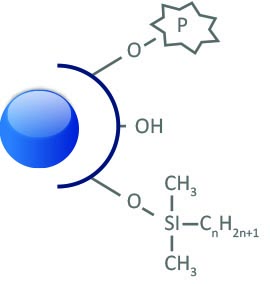 ash® RP-AQ
ash® RP-AQ
60Å - 500 m2/g
15 & 30 μm
RP-alkyl, 6% Carbon
End-capping: mixed
pH stability: 2.0 to 7.5
Separation/purification of strongly and moderately polar molecules.
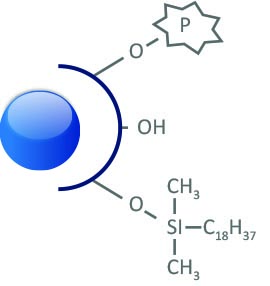
puriFlash® C18-AQ
100Å - 300 m2/g
5, 10, 15 & 30 μm
C18 mono-functional, 14% Carbon
End-capping: mixed
pH stability: 2.0 to 7.5
Separation/purification of moderately polar and non-polar molecules.
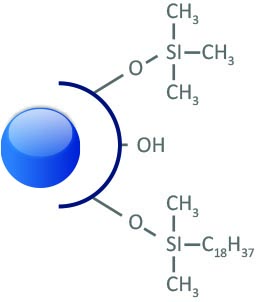
puriFlash® C18-HP
100Å - 300 m2/g
5, 10, 15, 30 & 50 μm
C18 mono-functional, 16,5% Carbon
End-capping: one-step
pH stability: 1.5 to 7.5
This is an excellent choice for routine reverse phase purifications.
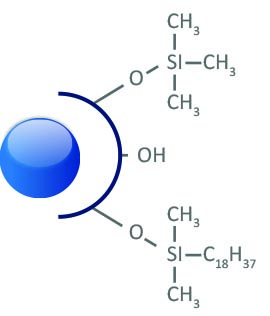
Uptisphere® Strategy™ C18-HQ
100Å - 425 m2/g
1.7, 2.2, 3, 5, 10, 15 μm
C18 mono-functional, 19% Carbon
End-capping: multi-step
pH stability: 1.0 to 10.0
Suitable for many pharmaceutical applications and routine methods.
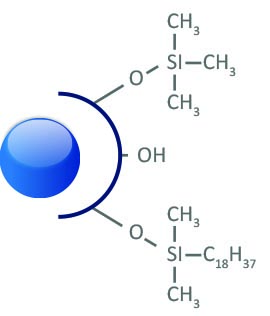
puriFlash® C18-XS
100Å - 300 m2/g
5, 10, 3, 15 & 30 μm
C18 mono-functional, 17% Carbon
End-capping: multi-step
pH stability: 1.0 to 10.0
It is an excellent phase for the complete separation of basic molecules.
There are mor phases available. Contact us for more information for suitable stationary phase for Flahs/Purification chromatography.
UHPLC Reagents
 The UHPLC technology requires far better quality solvents than what is currently available on the market. Biosolve ULC/MS solvents, buffers and acids line combine the highest demands for:
The UHPLC technology requires far better quality solvents than what is currently available on the market. Biosolve ULC/MS solvents, buffers and acids line combine the highest demands for:
- UV low gradient drift
- Minimal peak impurities
- Lowest ionic background in MS detection
- Less than 100 ppb of Alkali metal
ULC/MS solvents, are micro filtered at 0,1 µm, have a residue after evaporation of max. 1 ppm and are packed under inert gas for better shelf-life. Besides the standard 2,5 l packaging, Biosolve is now offering for nano LC/MS:
- 500 ml bottles of acetonitrile, methanol, and isopropanol
- 1 l bottle of water
- 100 ml TFA
Information about the reagencies are available. Just ask for it.
Cleaning the injector
INJECTOR
- It is reported that the cause of 85-90% of problems during analysis can be found in the inlet. Therefore, do not forget to regularly replace all consumables. The liner, septum and all seals have a limited lifespan!
- Sometimes, however, replacing consumables or cutting the column is not enough. Then it is necessary to clean the supply. General instructions can be found below, but always follow your manufacturer's instructions first and foremost!
Cleaning
- Cool the inlet. The temperature should not exceed 40°C.
- Turn off the carrier gas flow.
- Uninstall any autosampler.
- Uninstall the column.
- Open the inlet, remove all consumables.
- If possible, it is preferable to disconnect the split branch of the pneumatic system from the inlet.
- The inlet now consists of just a metal tube, which may or may not be tapered at the end.
- There are various tools that can be used for cleaning (eg a grater). Using such a brush and methylene chloride and methanol, move down and clean the intake.
- Using a pipette, spray the inlet with solvent (capture the solvent under the inlet in a beaker) and make sure that no dirt particles remain in the inlet.
- To remove residues, insert and heat the inlet to approx. 65 °C.
- Reinstall the split branch of the pneumatic system, install new consumables.
- Turn on the carrier gas flow. Check for leaks.
- Allow the supply to flush for at least 10 minutes before increasing the temperature. Remove residual oxygen. A premature increase in temperature may activate and degrade the new consumable.
Cleaning the detector
FID
Audible noise, random ghost peaks, low sensitivity. These are typical characteristics of dirty FID detector.
The most common cause contamination sulfide is bleeding from the column. Burned stationary phase may be deposited on the nozzle surface of the detector and cause problems. However, the nozzle napalují and other contaminants.
You need to clean your detector?
The above-described problems, however, may not only be caused by contamination of the detector. The steps outlined below will help rule out other potential causes.
The carrier gas and the stationary phase bleeding
Possible source of contamination can be found not only in the detector itself, but also in front of him. Bleeding stationary phase column, septum, inlet contaminated, contaminated carrier gas ... To eliminate this source Blind FIDU corresponding input plug and turn the FID. If the problem ceases, search problem outside detector. No need to replace the liner? Septum? Clean inlet? What is the state column? Do you have a pure carrier gas? You do not have a leak in the system?
Hydrogen and air
Even hydrogen and air used in the sulfide can be a source of contamination. Attention: especially when problems emerged after replacing the cylinder.
Also improper flow / pressure of the two gases can be a source of increased noise and reduced sensitivity to ignition problems sulfide. Make flows through the meter.
Electrical System
I electrical interference may exhibit similar symptoms dirty FID. There may be a defect electrometer, poor contact or interference by other devices in the lab.
Before cleaning
- Make sure to unplug the power cord!
- Remember that the detector may be hot!
- When dismantling FIDU pay attention insulating parts. Use tweezers, whether these parts do not transfer dirt from your hands or gloves. Beware of possible scratches.
- Remember that sometimes it may be easier to change the nozzle before it is cleaned. This is particularly true when the nozzle is heavily contaminated and sharply increases the risk of scratches during nozzle cleaning.
Cleaning
- Remove the nozzle from the sulfide.
- Place it in an ultrasonic bath with water and detergent and ultrazvukujte about 5-10min.
- Use a tool or a suitable thin wire purge nozzle. Be careful. Any scratches may change the shape of the flame, increasing noise or loss of sensitivity.
- Re-insert the nozzle into the ultrasonic bath and ultrazvukujte other 5-10min. From now handling the nozzle use only tweezers.
- Rinse the nozzle with clean water.
- Rinse nozzle small amount of methanol.
- Blow nozzle stream of air or nitrogen.
- Let dry nozzle.
- Seskládejte FID. Pay attention to tightening. When you drag nozzle may cause its deformation!
- After seskládání can connect column. It is appropriate to heat the FID temperature 10 ° C-40 ° C higher than the normal operating temperature of the detector. Note maximum temperature limit FIDU! Note the maximum operating temperature of the column!
How to keep your detector FIT
- A new column is bleeding most. Install the column and into the inlet, as usual, but let the detector end freely in the furnace and condition the column. Then install the column and into the detector.
- Use a good quality, low column bleed.
- Moisture and oxygen in the carrier gas deplete the stationary phase of the column and cause a bleeding. Wear high-purity gases, molecular sieves, traps ... Check the tightness of the gas circuit.
- Use appropriate septa with low bleed and change them often enough.
ECD
ECD is a specific and sensitive detector. Inappropriate behavior, however, can sharply reduce its lifespan. The gradual increase in signal at this detector normal. However, if an increase occurs abruptly or adding more of the symptoms worsening-noise desensitization search problem.
Cleaning
- ECD contains radioactive material, therefore, mandated regular wear tests. It is forbidden to open or to interfere in any way.
- ECD can be cleaned only thermally. Generally, cleaning is performed so that the ECD detector heated to a temperature close to its maximum operating temperature and impurities are burned. Before cleaning, be sure there are no leaks. Raising the temperature takes place gradually. Track signal. Increase the temperature by 10-20 ° C, the signal starts to grow. Wait for the signal to stabilize and begin to decline, then you can again increase the temperature. Upon reaching the desired temperature, wait for the signal to decrease the expected values.
- Follow the instructions of your manufacturer, the procedure may vary.
- If you heat detector installed column exceed the maximum operating temperature of the column or column Deinstall detector and replace the plug.
Do not ruin your detector!
- Use good quality gas intended for ECD.
- Use molecular sieves, traps for purification of gases.
- When potížích- increase in signal noise worse, desensitizing like. Check system for leaks.
- Use quality columns and septa with low bleeding.





 0
0
 0
0